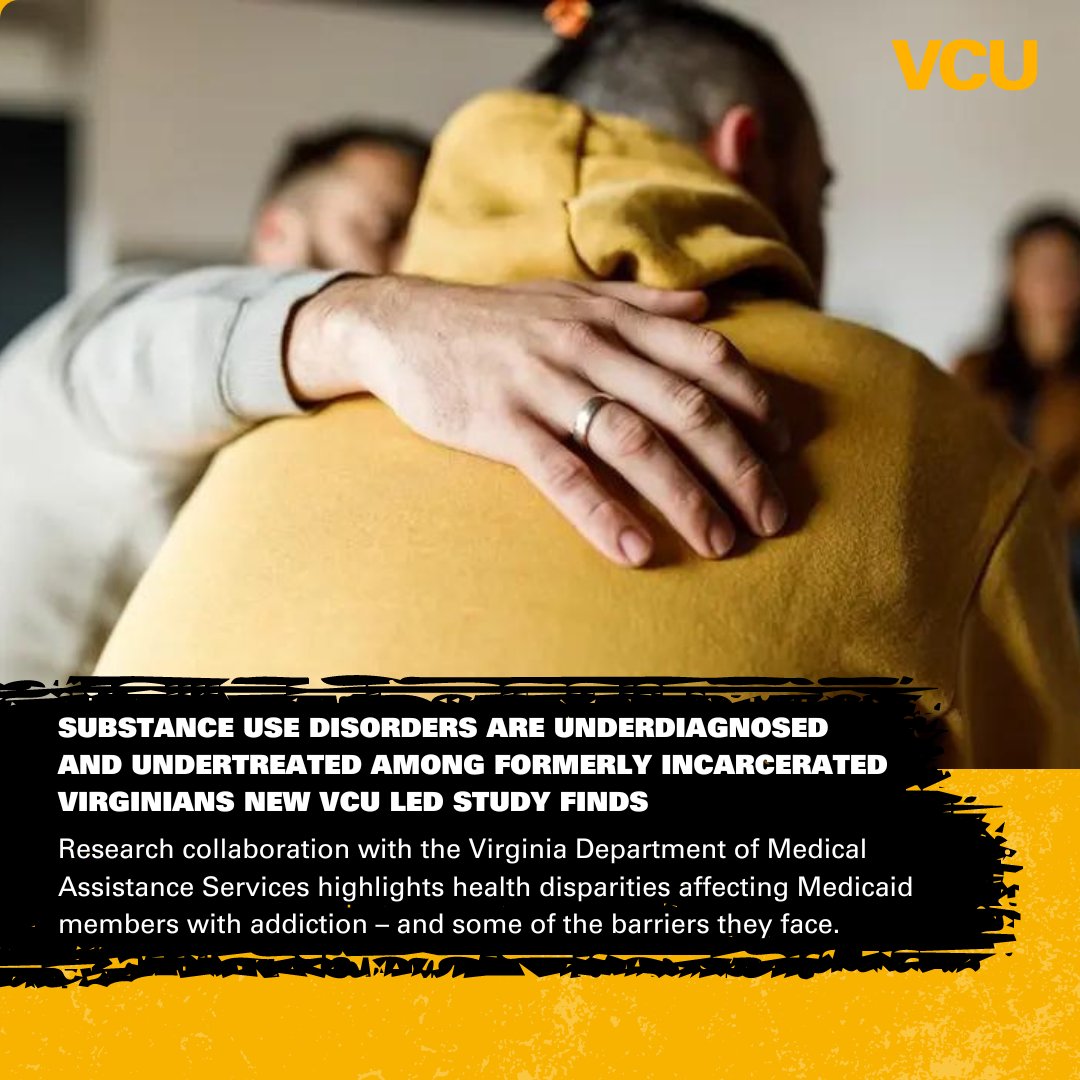By: Maria-Paula
A New research led by Virginia Commonwealth University’s School of Population Health in collaboration with the Virginia Department of Medical Services has shown that people recently released from prison suffer some of the highest rates of substance use disorder.
The study, which highlights health disparities affecting Medicaid members with addiction and some of the barriers they faced also shows that they are the least likely to have access to providers who can diagnose and treat their addiction.
Shedding light on the magnitude of the underdiagnosed and undertreated substance use disorder among the former incarcerated Virginians gives a clear picture of health disparities in the commonwealth and what policies might help people receive lifesaving care.
A national estimate shows that as many as 85% of people who are incarcerated have substance use disorders. Although most of these adults are eligible for Medicaid services after their release, the VCU-led study found that in Virginia, only 17% of formerly incarcerated Medicaid members were diagnosed with substance use disorders. Less than the realized 17% received medications as treatment for their addiction.
“We know that substance use disorders are prevalent health issues among incarcerated populations, but this research shows that many people aren’t getting the medical attention they need as they transition back to their communities,” said Peter Cunningham, Ph.D., lead researcher and interim chair of the Department of Health Policy at VCU’s School of Population Health.
Assisted by Sarah Marks and Hannah Shadowen, both M.D.-Ph.D. students at VCU’s School of Population Health, together with Peyton Bernstein, a master’s student at the College of William & Mary, Cunningham and his team used data from both DMAS and the Virginia Department of Corrections. The research is to better understand health disparities impacting Medicaid members with opioid and other substance use disorders. This is done by measuring the number of people being diagnosed and treated for a substance use disorder following their release from prison.
According to the VCU research team’s analysis, 4,652 adults were released from county jails and state prisons in 2022, with 85% enrolling in Medicaid within one month of release. Among those enrolled in Medicaid, only 17% had seen health care providers and were diagnosed with a substance use disorder within three months, including 13% with an opioid use disorder.
Of those who were formerly incarcerated and diagnosed with an opioid use disorder, only about 25% went on to receive medications to treat their addiction. By comparison, 78% of all Medicaid members diagnosed with an opioid use disorder in Virginia received medications.
“The good news is that we see a high number of individuals enrolling in Medicaid soon after they are released from prison, and that is in large part due to the state expanding Medicaid coverage in 2019,” Cunningham said. “However, based on national statistics, we expected more people to receive a diagnosis and treatment for opioid addiction. This is concerning because having an undiagnosed, untreated opioid use disorder greatly increases the risk of overdose.”
The researchers noted that a number of barriers might be contributing to these gaps in addiction treatment, such as the instability many formerly incarcerated adults experience after their release, as well as limitations in access to Medicaid services set by federal policies.
While many individuals in the criminal justice system qualify for Medicaid,treatment for substance use disorders is prohibited by federal law until after their release from prison with coverage on only emergency hospital services while in jail.
“The first few months after a person is released from incarceration is a particularly vulnerable time. They often have to figure out all aspects of their life at the same time. Many people don’t have a stable residence, mailing address or phone number, which makes it difficult for the Medicaid agency to contact them for health services,” said Shadowen.
Mark pointed that it can also take some time for a person to be registered as eligible for Medicaid and schedule an appointment with a provider.
“Even having the required photo identification and Medicaid card to visit a doctor’s office is going to be much harder to do during this period of tremendous instability,” he added
The researchers recommend increasing access to treatment prior to release of the affected to help facilitate transitions to the community. This they said will also ensure continuity of treatment following release from incarceration.
“If providers are able to diagnose substance use disorders and initiate treatment plans before a person is released from prison, this might reduce the risk of overdoses and improve health outcomes when they return to their community,” Cunningham said.
Looking ahead, the researchers are surveying formerly incarcerated Medicaid members to pinpoint some of the barriers they experience when seeking addiction treatment after prison.
A new VCU-led study highlights ex-convicts’ health disparities in Medicaid



